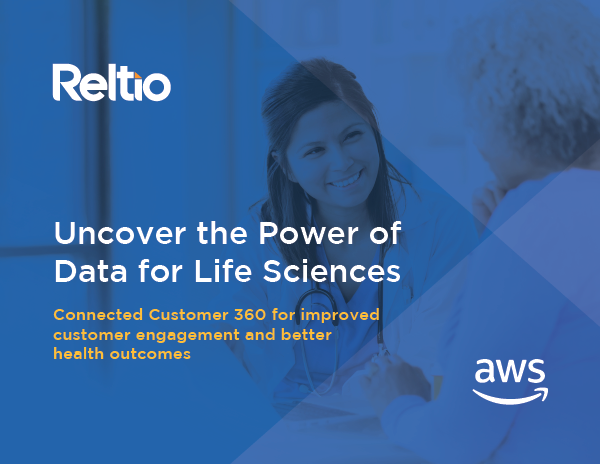Connected Consumer Data: Meaningful Outcomes for Our Health and Wealth

The experience economy
Consumer experience is already a compelling agenda for many different industries and it is becoming increasingly important for Healthcare and Life Sciences too. CPG giants such as Danone have already mastered the art of creating products specifically for individuals who are interested in making healthy and/or more environmentally-friendly choices. Life Sciences organizations have followed suit and developed significant Consumer Health divisions because they recognize that the business of prevention is more important than developing cures. In Healthcare, a HCEG survey also showed that consumer experience was going to be a priority for 2020 – second only to costs and transparency. In addition, the availability of third- party consumer data providers, the Internet of Things (IoT) and the data generated by consumer wearable devices have irrevocably changed the landscape for all companies in the consumer health space.
The importance of a connected consumer profile
The challenge that consumer health ecosystem players face will be to provide increased access to enhanced experiences – combined with holistic health outcomes – but in less time, at a lower cost and with fewer resources. Their ability to collect, clean, analyze and use available internal and external data sources is widely acknowledged as paramount but the crucial capability – that of connecting it all together into a single profile of a consumer – is often overlooked. This can not only stand in the way of them increasing profits, reducing costs and complying with regulations, but also impede their ability to optimize consumer (i.e. patient) wellbeing. It is this connected consumer profile that will enable companies to provide an optimized experience to consumers when they receive healthcare, buy products or get prescribed drugs. And yet, this profile will also need to represent an individual not just as a consumer but also connected with the profile that represents them as a patient to deliver the best possible care in a timely, affordable and accessible way.
Consumer & Patient – two sides of the same coin
The realization that an individual is both a consumer and a patient and that their overall experience, as well as their medical health, need to be connected is just starting to be understood. On the HCEG 2020 list, the challenge of the consumer experience is described as:
“Understanding, addressing and assuring that all consumer interactions and outcomes are easy, convenient, timely, streamlined and cohesive so that health fits naturally into the ‘life flow’ of every individual’s, family’s and community’s daily activities.”
This emphasis on “life flow” clearly indicates that experience is no longer about one-off interactions, but a series of interactions that form a relationship between the consumer and the provider that must be nurtured and maintained. Such interactions need to be pulled together into the consumer profile so that a complete understanding is available to all who deal with that person both as a consumer and as a patient.
Social determinants of health
Frost and Sullivan also had a list of 8 predictions for 2020 and at the top was the idea that data about the social determinants of health (SDOH) would become increasingly important to US health providers in making all types of decisions on risk, outcomes and business impact. The research shows that demographics, environment and socioeconomic factors have a bigger impact on overall health at 80-90% than medical care at just 10-20%. It says:
“Proactively engaging the right patients based on their SDOH can improve health outcomes and help healthcare organizations meet quality standards.”
This type of data is available from the patients themselves and also from external third-party sources. Health providers will need to integrate these together if they are to have an impact on the quality of healthcare they provide. In addition, when used effectively, the integrated data could enable them to proactively prevent and/or manage health issues thus enabling them to meet their goals to reduce overall costs and increase transparency.
Better collaboration leads to better healthcare outcomes
The evidence about social factors having the biggest impact on wellbeing versus medical intervention has, in part, been the driver for Life Sciences organizations to move more into the consumer health arena. One reason is that it is a very big market opportunity as shown in McKinsey’s healthcare systems and services 2020 trends report:
“It has become clear that social, non-medical factors (…) play a major role in individual and population health. Behavioral health disorders affect one in five Americans, and 70 percent of those with a behavioral health disorder also have a physical health condition.”
However, the trend has had additional benefits for consumers because increased collaboration between life sciences and providers across the healthcare spectrum has a corresponding improvement on overall patient outcomes. In fact Deloitte’s Life Sciences report for 2020 states that Life Sciences organizations are at an inflection point:
“Data-driven approaches have the potential to create value across manufacturing, the supply chain, and the entire healthcare ecosystem. As technology and behavioral science converge, the focus is increasingly shifting to disease prevention.”
The report talks about how connected consumer devices can include medical-grade sensors that can deliver data everywhere. They predict these devices will reduce complexity for the patient and, as the Deloitte report states:
“As patient-centric models are adopted within the industry, they are informing operational approaches and setting the foundation of personalized healthcare.”
Connected data leads to better human experiences
However, those foundations will not be built upon if the data collected remains in siloes and cannot be connected to other valuable patient data in one place in an accessible way for all stakeholders (assuming appropriate consents).
There are a number of obstacles to overcome in order to achieve holistic, personalized healthcare for all. These include:
- vast increases in data volumes and sources
- legacy systems that constrain the way that different data types can be stored and shared
- comparatively high cost of on-premises systems
- increasing level of security scrutiny and privacy regulations
- existing stringent levels of regulation within healthcare and life sciences
There are a number of potential solutions to this and critically they all converge on the idea of clean, connected and accessible data. However, it’s not just data about people – it’s all types of data domains from huge numbers of different sources. In the Wall Street Journal in February 2020 Mike DeLone, Deloitte’s Global Lead for Life Sciences provides some insight into how to move forward:
“To achieve interoperability of massive quantities of data—generated by regulators, customers, patients, doctors, and caregivers, and produced by wearable devices, sensors, even smart pills—life sciences companies this year will likely spend more time exploring cloud platforms and other natively interoperable and API-based architectures.”
It is already recognized that the human experiences — of patients, the workforce, and ecosystem partners — are interrelated and affect business outcomes. The technology underpinning these enhanced experiences must enable connections to be made between all these humans, gadgets, transactions, interactions and third-party sources in a way that is effective and financially viable. A marker of success for this will be when it is recognized that a person is a full-time consumer but (hopefully) only a part-time patient and whose experiences are adapted and optimized through his/her “life flow.”
Achieving meaningful outcomes for all
The prioritization of physical well-being ahead of profitability is in everyone’s interests. It aligns with the advice Guy Kawasaki (author, speaker and entrepreneur, previously of Apple and Google) gives innovators to focus on making meaning – not money. He says changing the world is more important and that a by-product of this is that they almost always also make money. Conversely those who just focus on generating wealth will fail most of the time. The combined forces of Healthcare, Life Sciences and CPG are continuing to recognize the truth of this. They are creating ecosystems based on connected data that:
- build and sustain holistic healthcare
- empower consumers to monitor and improve their own health outcomes
- enable patients to access and consume a higher quality of care
- reduce costs (time and money) for their organizations
- reduce costs (time and money) for consumers and patients
- make healthcare providers and pharmaceuticals accountable for care and treatment they offer
A connected consumer experience built on natively interoperable, API-based systems – that incorporates the data to recognize and acknowledge when that consumer is also a patient creates value for all stakeholders. It will also help the ecosystem organizations find real value for themselves and their shareholders in the coming years.
In short, connected consumer data can change the world by enabling us all to make truly meaningful choices about our future health and wealth.
Download our free eBook:
Uncover the Power of Data for Life Sciences
